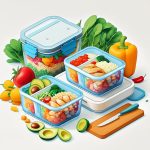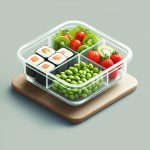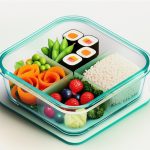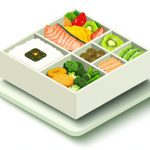Ever accidentally swallowed a tiny bit of paper? Or maybe you’ve wondered about those times a kid might munch on a scrap of cardboard? It’s surprisingly common, and while a little bit of plain paper probably won’t hurt, there’s more to the story than you might think. This article looks at the whole picture of eating paper – from the minor mishap of a stray piece to the more serious issue of someone who regularly eats non-food items. We’ll explore what happens when paper gets swallowed, what kinds of paper pose a real risk (hint: it’s not just the paper itself!), and what to do if you or someone you know is dealing with this. We’ll give you clear, easy-to-understand advice so you can feel confident navigating this unusual situation. Similarly, ingesting unusual things like [chicken bones](https://chaztin.com/is-eating-chicken-bones-healthy) can also have consequences.
Is Paper Healthy to Eat? Risks and Potential Health Implications
Let’s be honest, the thought of eating paper probably isn’t the most appetizing. But is it actually harmful? Well, the simple answer is: generally, no, paper isn’t something you should be eating. While a tiny, accidental nibble of plain printer paper likely won’t cause a medical emergency, making a habit of it, or eating larger amounts, or consuming different types of paper—that’s a whole different story (just like consuming other non food items).
Understanding the Risks: Differentiating Paper Types and Potential Harmful Effects
The danger of eating paper depends on several things. The type of paper plays a big role. A tiny piece of plain, uncoated notebook paper is unlikely to cause harm; your body will probably just pass it through without much fuss. It’s a bit like accidentally swallowing a small piece of dry pasta – not ideal, but not likely to cause any lasting damage.
However, the situation changes dramatically with other kinds of paper. Think about glossy magazines or cardboard boxes. These often have coatings, dyes, and inks. Many inks contain heavy metals or other chemicals that aren’t meant for human consumption. These chemicals could potentially be toxic, especially with repeated exposure (similar to the dangers of lead exposure). Can you imagine intentionally eating something with those kinds of coatings? It’s certainly not something you’d want to be doing regularly!
Furthermore, the paper-making process itself uses various chemicals. Although most of these are removed during manufacturing, some traces might linger. For example, chlorine, often used to bleach paper, can potentially create harmful dioxins (highly toxic environmental pollutants). These dioxins can build up in your body over time, potentially leading to health problems down the line. The extent of the risk is still an area of ongoing research, but it highlights that even plain paper isn’t entirely harmless. The U.S. Environmental Protection Agency (EPA) closely monitors dioxin levels in the environment and assesses their potential health impacts.
The Seriousness of Pica: Recognizing This Eating Disorder and Seeking Adequate Support
Persistent paper consumption might be a sign of pica, a real eating disorder. With pica, people have a persistent urge to eat things that aren’t food. It’s not just a quirky habit; it often points to underlying nutritional deficiencies or even psychological issues. According to the American Psychiatric Association, Pica must persist for at least one month to be diagnosed. If someone you know is regularly consuming paper, they need professional help to address the root causes of the pica and develop healthy eating patterns. Eating paper as a part of pica is definitely not healthy and needs immediate professional intervention.
What to Do If Paper Gets Eaten: Immediate Actions and Professional Recommendations
If you, or someone you know, accidentally swallows a small amount of plain, uncoated paper—don’t panic! In most cases, it will pass through the digestive system without causing problems. Drinking plenty of water might help it move along. However, keep an eye out for any symptoms. If you experience any persistent abdominal pain, nausea, or vomiting, see a doctor immediately.
If a larger amount of paper is swallowed, or if the paper had coatings, inks, or other additives, go to a medical professional. Tell them exactly what kind of paper and how much was ingested. The more information the doctor has, the better they can assess the situation and provide appropriate care.
For individuals diagnosed with pica, seeking professional help is paramount. This usually involves a team of healthcare professionals, including doctors, therapists, and nutritionists, to address multiple aspects of the disorder, including emotional and physical health aspects. The goal is to change unhealthy eating habits and tackle the underlying causes for a healthier future. Cognitive Behavioral Therapy (CBT) and family therapy are often used in these cases.
A Simple Guide: Summarizing Actions Based on Different Paper Ingestion Scenarios
Here’s a quick summary to guide your actions:
| Scenario | Immediate Actions | Long-Term Actions |
|---|---|---|
| Accidental (small amount) | Drink plenty of water and watch for any symptoms like stomach pain or vomiting. | Maintain a healthy diet and be mindful of paper handling, especially around young children. |
| Accidental (large amount) | Seek immediate medical attention. Explain the type and amount of paper ingested. | Follow your doctor’s advice carefully. |
| Pica | Seek professional help from a doctor, therapist, and potentially a nutritionist. | Ongoing therapy, nutritional guidance, and monitoring for improved eating habits and overall health. |
In conclusion, while unintentionally swallowing a tiny piece of plain paper isn’t usually cause for alarm, intentionally eating paper or regularly consuming even small amounts is not advisable. The risks are real, and the potential consequences range from mild discomfort to serious health concerns. Always prioritize your health and safety. If you have any concerns, seek the advice of a healthcare professional. Remember, prevention is always better than cure.
How to Treat Paper Ingestion in Children with Pica: Treatment Options and Support Resources
Key Takeaways:
- Pica, the eating of non-nutritive substances, is a serious condition.
- Paper ingestion, while seemingly harmless in small amounts, can cause problems.
- How to treat paper ingestion in children with pica involves a multifaceted approach.
- Immediate actions are crucial for accidental ingestion.
- Long-term management focuses on addressing underlying causes.
- Professional help is essential for children with pica.
Understanding Pica and Paper Ingestion: Identifying Contributing Factors and Complications
Pica is an eating disorder where individuals persistently consume non-nutritive substances like paper, paint chips, or clay. It’s more common in young children, pregnant women, and those with developmental disabilities. Why do some children develop this? It’s complicated, possibly involving nutritional deficiencies (like iron deficiency), psychological factors, or even learned behavior. According to the National Eating Disorders Association (NEDA), pica can also be linked to obsessive-compulsive disorder (OCD) and anxiety. While a small piece of plain paper might pass through the digestive system without incident, larger quantities or paper treated with chemicals pose significant risks.
Dangers of Paper Consumption: Recognizing Potential Health Risks
Think of your digestive system as a delicate machine. It’s designed to process food, not paper. Ingesting substantial amounts of paper can lead to intestinal blockages, requiring medical intervention. Symptoms of a blockage can include severe abdominal pain, bloating, vomiting, and the inability to pass gas or stools. Furthermore, many types of paper contain substances like dyes, inks, and coatings that are toxic if ingested. These chemicals can cause anything from mild stomach upset to serious poisoning, depending on the paper type and quantity consumed.
Immediate Actions for Accidental Ingestion: Steps to Take When it Occurs
If your child accidentally eats a small amount of plain paper, don’t panic. Monitor them for any signs of distress like vomiting, abdominal pain, or changes in bowel movements. Encourage them to drink water to help the paper pass. However, if they consume a large quantity of paper, or if the paper is colored, coated, or otherwise treated, seek immediate medical attention. Time is of the essence in these situations. Call your pediatrician or take them to the nearest emergency room.
How to Treat Paper Ingestion in Children with Pica: Strategies and Therapeutic Interventions
How to treat paper ingestion in children with pica isn’t a simple fix; it’s a journey requiring a comprehensive strategy. Here’s a breakdown:
- Medical Evaluation: A thorough check-up with a pediatrician or gastroenterologist is the first step. This rules out any immediate health threats and identifies potential nutritional deficiencies. Blood tests are commonly used to check for deficiencies.
- Behavioral Interventions: This is crucial. Identifying the underlying reasons for the pica is key. Behavioral therapy, such as cognitive behavioral therapy (CBT), can help children learn healthier coping mechanisms and replace the urge to eat non-food items. Reward systems can also be effective.
- Environmental Modifications: Remove tempting non-food items from the child’s reach. Storage solutions, childproofing measures, and constant supervision can make a significant difference. Keep paper products out of reach and consider using alternative materials for crafts and activities.
- Nutritional Support: Addressing any underlying nutritional deficiencies, often involving iron or zinc, may reduce the pica behavior, though the exact link is still being researched. A registered dietitian can create a meal plan to ensure the child receives adequate nutrition.
- Parental Support and Education: Parents need to understand the condition, engage in consistent behavioral strategies
- Glass Lunch Box Containers Offer Healthy, Leak-Proof Meal Prep - December 21, 2025
- Glass Bento Boxes Offer a Healthy, Eco-Friendly Lunch Solution - December 20, 2025
- Glass Bento Containers Make Packing Lunch Easier and Healthier - December 19, 2025










